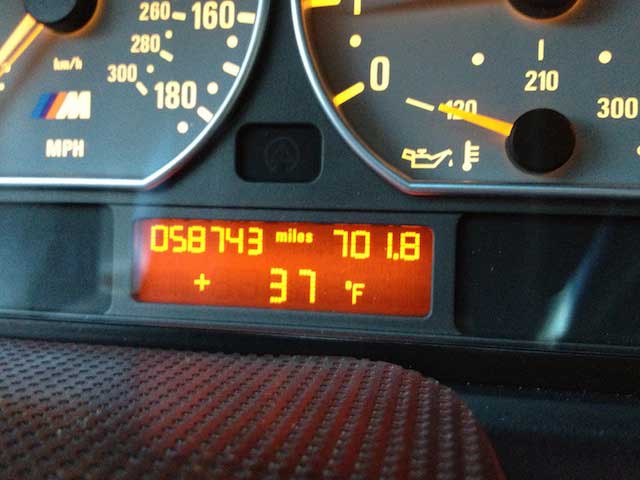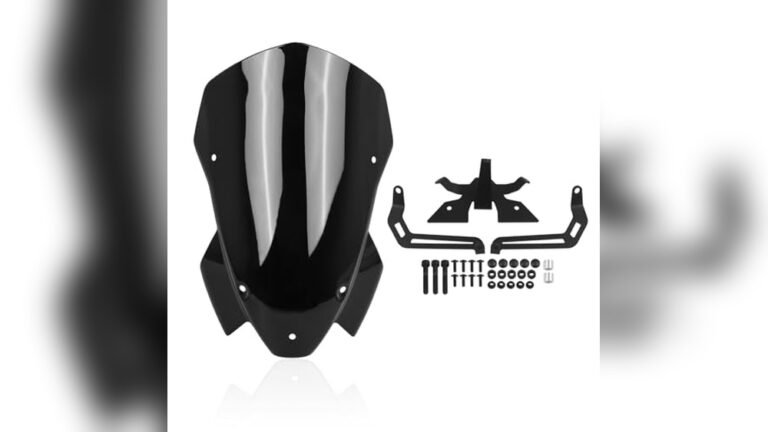BMW alerts at 37 degrees to warn drivers about potential icy road conditions and encourage them to exercise caution while driving in order to prevent accidents. BMW alerts drivers at 37 degrees to indicate potentially dangerous road conditions and promote safe driving to prevent accidents on icy roads.
Winter temperatures can cause the road surface to freeze, resulting in reduced traction and increased risk of skidding. By alerting drivers at this temperature, BMW aims to remind them to adjust their driving behavior and use caution on the road to ensure their safety and the safety of others.
This proactive approach helps BMW drivers make informed decisions and reduces the likelihood of accidents in icy conditions. Stay alert and stay safe on the road.
Bmw’s Temperature Warning Feature
The temperature warning feature in BMW vehicles serves an important purpose. It is designed to alert drivers when the outside temperature drops to a certain level, typically around 37 degrees Fahrenheit. This is especially crucial in colder climates, where icy road conditions can pose a significant risk to drivers.
BMW understands the importance of temperature alerts in vehicles and has integrated this feature into their in-car systems. By providing a warning at 37 degrees, drivers are able to take necessary precautions such as slowing down, increasing following distance, and allowing extra time for their journey.
With this feature, BMW prioritizes safety and ensures that drivers are well-informed about the current weather conditions. By being alerted to the temperature, drivers can make informed decisions and adapt their driving behavior accordingly, reducing the risk of accidents on the road.
The Science Behind 37 Degrees
The specific temperature threshold of 37 degrees, at which BMW alerts its drivers, has a significant impact on driving conditions and safety. This alert system is designed to ensure optimal performance and safety of the vehicle, taking into account the relationship between human perception of temperature and actual road conditions.
When the temperature drops to 37 degrees or below, roads are more likely to be icy or slippery, making it harder for vehicles to maintain traction. This increases the risk of accidents due to reduced control and longer stopping distances. By alerting drivers at this specific temperature, BMW aims to ensure that they are aware of the potential hazards and can take necessary precautions, such as driving at a reduced speed and using winter tires, to mitigate the risks associated with cold and icy roads.
Comparing human perception of temperature and actual road conditions is crucial because people may not realize the severity of the weather conditions and the impact it can have on driving. While a temperature of 37 degrees may not seem extremely cold to individuals, it can indicate hazardous road conditions that can compromise the safety of the driver, passengers, and other road users. By providing an early warning system, BMW helps drivers make informed decisions and promotes safer driving practices.
| Temperature | Driving Conditions | Safety Risks |
|---|---|---|
| 37 degrees or below | Icy or slippery roads | Reduced control and longer stopping distances |
| Above 37 degrees | Normal driving conditions | No specific safety risks related to temperature |
Alert Mechanisms And Safety Precautions
BMW alerts its drivers when the external temperature drops to 37 degrees to ensure their safety on the road. The alert mechanism operates through external temperature sensors installed in the vehicle. These sensors constantly monitor the temperature and send signals to the alert system when it reaches the specified threshold. This allows the system to promptly inform the driver about potentially hazardous road conditions caused by freezing temperatures.
In addition to the alert system, BMW vehicles are equipped with a range of other safety features that work in conjunction with the temperature sensors. These features include stability control, traction control, and anti-lock braking systems, which adjust their performance based on the temperature readings. This integration ensures that the vehicle’s safety systems can effectively adapt to the changing road conditions.

Credit: www.autoscopecarcare.com
Understanding The Alert’s Purpose
The BMW alert at 37 degrees is designed to improve driver awareness and reaction time, thereby ensuring safety while driving. This alert serves as a reminder of the potential risks associated with nearing-freezing road temperatures. By notifying drivers when the temperature reaches around 37 degrees, BMW aims to prevent any unpleasant surprises and encourage drivers to take necessary preventive measures.
Nearing-freezing road temperatures pose several risks such as ice formation, reduced traction, and longer braking distances. It is crucial for drivers to be aware of these risks as they can dramatically impact the safety and control of the vehicle. With the alert, BMW prompts drivers to be more cautious and adapt their driving behavior accordingly to address these dangers.
When the alert appears, it is recommended to take immediate preventive measures. These may include slowing down, maintaining a safe following distance, and considering the use of winter tires or chains. By promptly addressing the alert, drivers can reduce the likelihood of accidents and ensure a smoother and safer driving experience.
Impact On Driver Experience
Many BMW drivers have shared their experiences with the alert system that activates at 37 degrees. Some drivers have reported feeling reassured by the alert, as it acts as a warning for potentially slippery road conditions.
However, anecdotal experiences from BMW drivers vary. Some drivers find the alert to be unnecessary or irritating, especially in areas that rarely experience temperatures near freezing. Others appreciate the reminder to exercise caution when the ambient temperature drops.
These alerts can influence driving habits and precautions. Some drivers may become more mindful of their speed, braking, and steering in cold conditions to avoid accidents. Others may not pay much attention to the alerts, potentially disregarding the importance of caution during colder temperatures.
Overall, BMW’s system strikes a balance between alert usefulness and driver response. While it aims to enhance driver safety and awareness, individual driver reactions and behaviors will vary. It is crucial for drivers to be aware of local weather conditions and adjust their driving accordingly, regardless of the presence of alerts.
Innovations In Automotive Temperature Monitoring
Evolution of temperature alerts in the automotive industry
Temperature monitoring in automobiles has come a long way, especially with the advancements made by companies like BMW. These automotive giants have continually integrated safety technology into their vehicles, aiming to provide their customers with the utmost security on the road.
One noteworthy innovation is the temperature sensor that triggers an alert at 37 degrees. The primary purpose of this alert is to warn drivers about potential road hazards, such as icy conditions or black ice, which are more likely to occur at this specific temperature.
This technology has evolved over time, with earlier systems utilizing less precise thresholds or relying solely on visual indicators. However, the introduction of temperature alerts has revolutionized the way vehicles respond to changing weather conditions, helping drivers to make informed decisions and mitigate potential risks.
Comparing Bmw’s Approach With Other Brands
BMW has gained attention with its temperature alert system that triggers at 37 degrees. This strategy is unique compared to other car manufacturers who may use different approaches to temperature warnings. While BMW focuses on a specific temperature point, other brands may provide a range or use different thresholds to caution drivers.
Car manufacturers implement various strategies based on their understanding of how temperature affects vehicle performance and safety. Some may take a more conservative approach, alerting drivers at lower temperatures to ensure precautionary measures are taken. Others may prioritize specific components or systems, triggering warnings only when those are at risk.
Consumer responses and preferences regarding temperature warnings vary. Some may appreciate the specificity of BMW’s system, finding it helpful to know exactly when issues may arise. Others may prefer a broader alert system that covers a wider temperature range, allowing more flexibility in planning and preparation for potential problems.
| Car Manufacturer | Temperature Alert Approach |
|---|---|
| BMW | Alert at 37 degrees |
| Brand A | Alert at 30-40 degrees |
| Brand B | Alert at 35 degrees or when specific component is at risk |
The Future Of In-car Temperature Awareness
The future of in-car temperature awareness is rapidly evolving, with potential enhancements in sensor technology and alert systems. The role of smart cars in road safety and environmental adaptability has become increasingly important. BMW’s alert at 37 degrees is just one example of how temperature sensors can improve driver awareness and safety. These alerts are designed to warn drivers of potentially hazardous conditions, such as black ice, which can form at or below freezing temperatures. By providing real-time temperature information, drivers can make better decisions and adjust their driving behavior accordingly.
In addition to the technological advancements, legal and regulatory considerations play a crucial role in the implementation of safety alerts in vehicles. Governments around the world have taken steps to ensure the safety of drivers by mandating certain safety features, including temperature alerts. These regulations help create a standardized approach across automotive brands, ensuring that drivers have access to critical information regardless of the vehicle they are driving. Moreover, the implementation of these alerts is essential in promoting road safety and reducing accidents caused by extreme weather conditions.
As technology continues to advance, we can expect further improvements in temperature awareness and alert systems in smart cars. With ongoing research and development, sensor technology will become more accurate and responsive, providing drivers with even more reliable information. The future of in-car temperature awareness holds great potential for keeping drivers safe and ensuring the adaptability of vehicles to different environmental conditions.
Frequently Asked Questions For Why Does Bmw Alert At 37 Degrees
Why Does Bmw Alert At 37 Degrees?
The BMW alert at 37 degrees is a warning system designed to notify drivers of potentially icy road conditions. When the outside temperature reaches this threshold, the car’s sensors detect the possibility of slippery surfaces and activate the alert. This feature helps drivers to stay safe and take necessary precautions while driving in cold weather.
Conclusion
The BMW’s alert at 37 degrees serves as a crucial safety feature for drivers. This temperature is a critical threshold where the road conditions can drastically change, affecting the vehicle’s performance. The alert acts as a reminder to exercise caution and be prepared for potentially hazardous driving conditions.
By being aware of the significance of this temperature, BMW drivers can prioritize safety and take appropriate measures on the road. Stay alert, stay safe!







